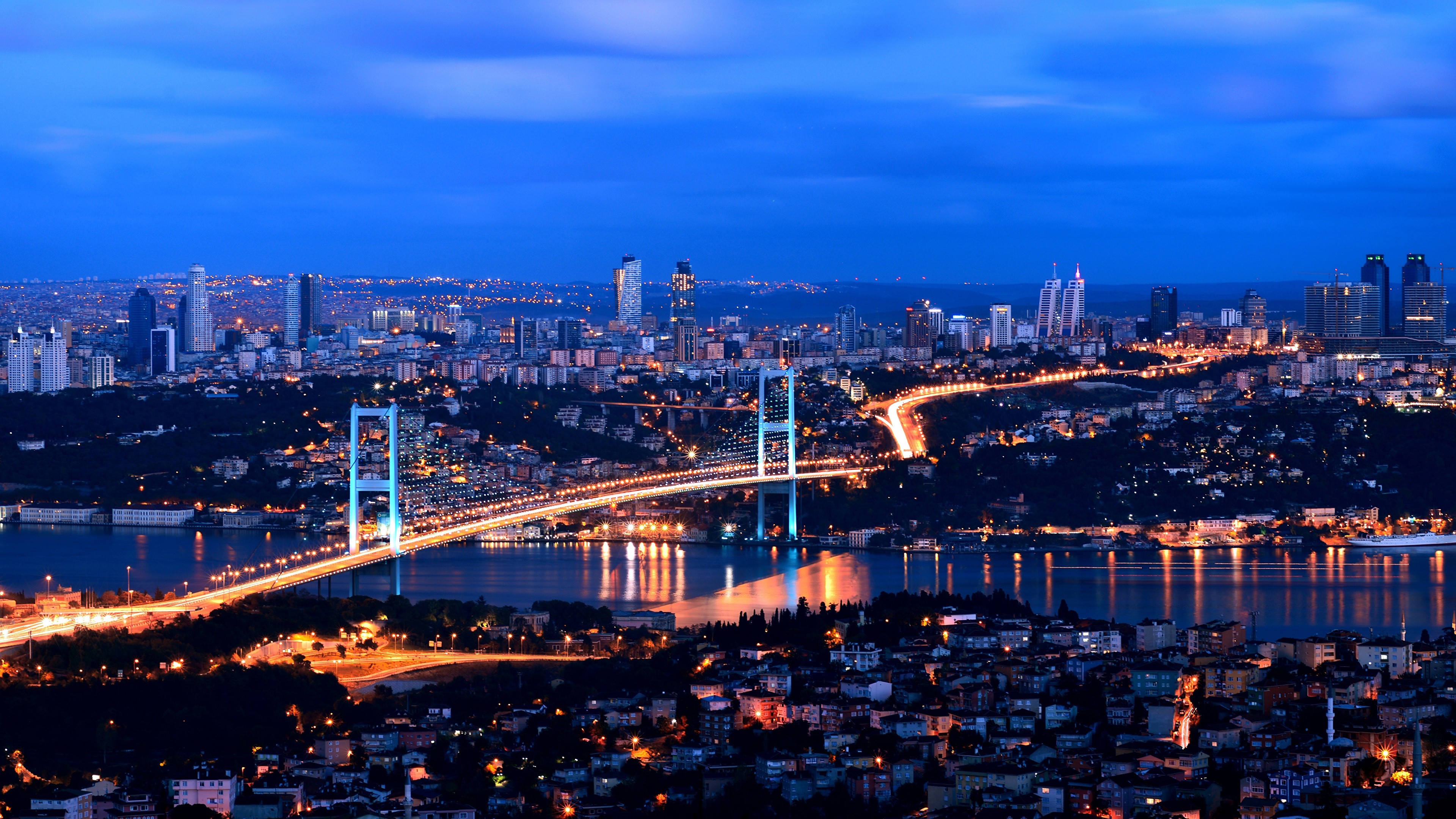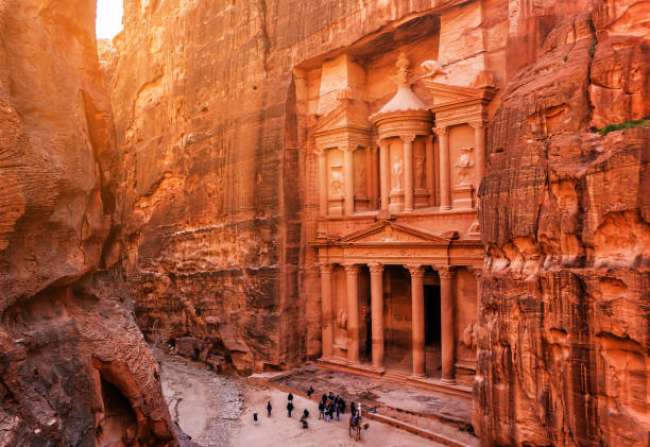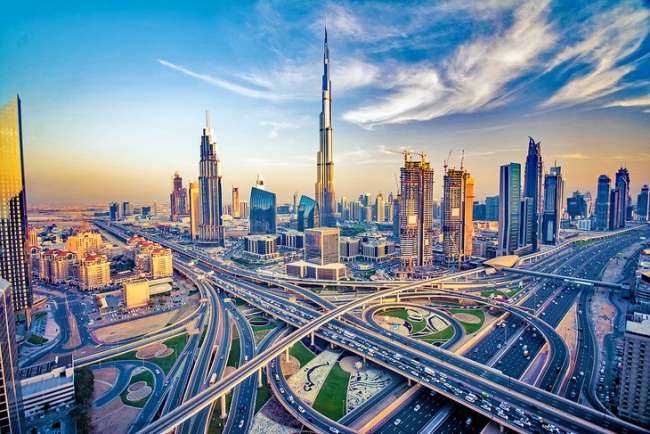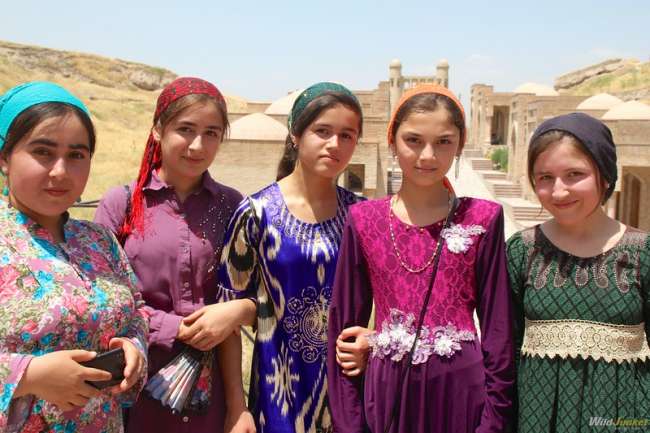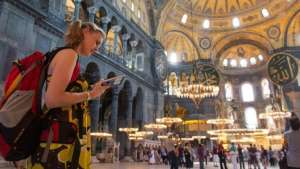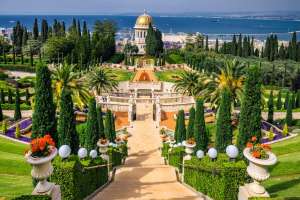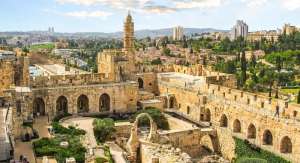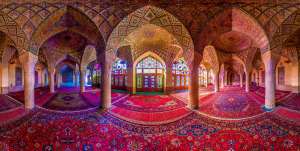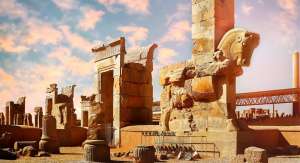Whether you’re drawn by shimmering coastlines, ancient ruins, or cities humming with a thousand stories, Turkey has a way of capturing your senses from the moment you arrive. It’s a country that bridges worlds—between East and West, past and present, spirituality and modern life. Here, every city offers something unique, from architectural wonders to lively bazaars, calm seaside promenades, and the soft call to prayer echoing over rooftops at dusk.
Turkey is more than a destination—it’s a deep dive into centuries of layered history, where empires have come and gone, leaving behind minarets, mosaics, and food traditions that feel both exotic and familiar. You’ll find warmth not just in the Mediterranean sun but also in the people’s genuine hospitality, the kind that makes you feel like you’ve been there before. Whether you’re exploring the bustling heart of Istanbul or the quiet charm of a small inland town, every moment has a way of sticking with you.
From the energy of the markets to the calm of seaside cafés, from busy ferries crossing the Bosphorus to the peaceful rhythm of rural life in Cappadocia’s Urgup, there’s truly something for everyone. With so much to see, taste, and experience, even the longest itinerary will feel too short. Below are twelve of the most fascinating cities to visit in Turkey—each one a world of its own.
1. Istanbul
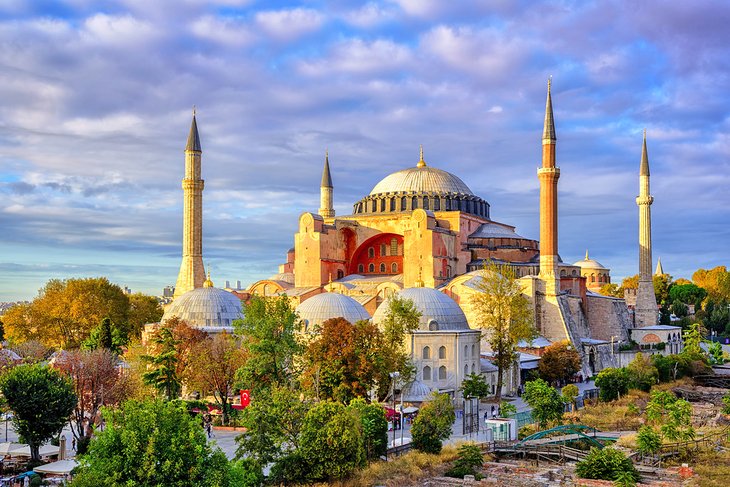
Istanbul is not just a city—it’s a living mosaic of civilizations. Sitting proudly across two continents, Europe and Asia, this immense metropolis of nearly fifteen million people is as captivating as it is complex. The air here hums with the rhythm of the ages; every stone, dome, and alleyway tells a story that stretches back millennia.
It’s no surprise that Istanbul ranks among the most beloved city-break destinations on Earth. Within the old heart of the city alone, you’ll find more monumental heritage than some entire countries can boast. The combination of Byzantine grandeur and Ottoman splendor makes every turn feel like you’ve stepped through another century.
Even if you had weeks, you could never see it all. The historic core is where most travelers begin, surrounded by masterpieces of faith and empire: the majestic Blue Mosque with its sea of blue tiles; the timeless Hagia Sophia, once a cathedral, then a mosque, now a museum; the regal Topkapi Palace, once the seat of sultans; and the ever-bustling Grand Bazaar, where the scent of spice and leather fills the air. These landmarks alone could occupy days, but the magic of Istanbul lies in how seamlessly the ancient lives beside the modern.
Beyond its past, Istanbul buzzes with a contemporary spirit. Its cafés overflow with young artists, musicians, and students debating everything from politics to poetry. The city’s culinary scene is a feast for the senses—Ottoman-inspired banquets, Anatolian comfort food, and sleek fusion restaurants all share space along the same boulevards. Meanwhile, the modern art scene is flourishing, led by creative powerhouses like Istanbul Modern and ARTER.
Yet, perhaps the most captivating part of Istanbul is simply being in it—sipping strong Turkish tea by the Bosphorus, watching ferries glide between continents, wandering through Balat’s colorful streets, or hearing the overlapping calls to prayer drift across the skyline. Istanbul doesn’t just show you history—it lets you feel it moving through time.
2. Antalya
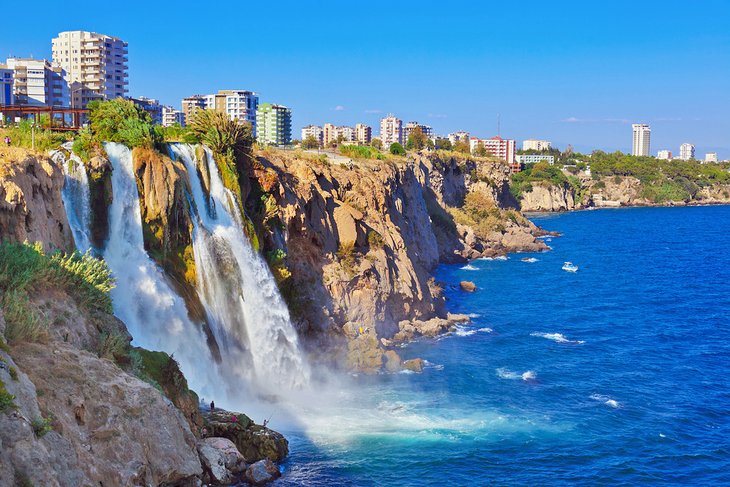
Perched on Turkey’s southern coast, Antalya is the sparkling jewel of the Mediterranean—a blend of ancient beauty, sun-soaked beaches, and a cosmopolitan pulse. With its population of over a million residents, the city manages to balance the relaxed rhythm of coastal life with the vibrant tempo of a modern metropolis.
Antalya is where turquoise seas meet dramatic mountain backdrops, and it’s a haven for travelers seeking both relaxation and exploration. The city offers two of Turkey’s most beloved beaches: Konyaalti and Lara. Each offers its own kind of charm—Konyaalti with its long promenade lined by cafés and palm trees, and Lara with its soft golden sand and luxury resorts. You can spend the morning swimming and the evening wandering cobblestone lanes without ever feeling rushed.
At the heart of the city lies the enchanting Kaleiçi district, a beautifully preserved old town that feels like a living museum. Narrow streets twist between restored Ottoman mansions, flower-draped balconies, and boutique hotels that look out over a Roman harbor with deep blue waters and the rugged coastline stretching beyond. Even if you never left Kaleiçi, you’d still feel you’ve seen the soul of Antalya.
But step beyond, and the region opens up to an extraordinary world of ruins and history. Within an easy drive are some of the most remarkable archaeological sites in the country: Aspendos with its perfect ancient theater, the vast columns of Perge, the coastal ruins of Side, and the cliff-top city of Termessos. Each is a reminder that this part of Turkey has been home to countless civilizations.
Still, what makes Antalya unforgettable is its atmosphere—a place where the pace of life slows with the setting sun, where you can eat grilled fish fresh from the sea, listen to the waves against the harbor wall, and feel, for a moment, that time doesn’t matter.
3. Bursa
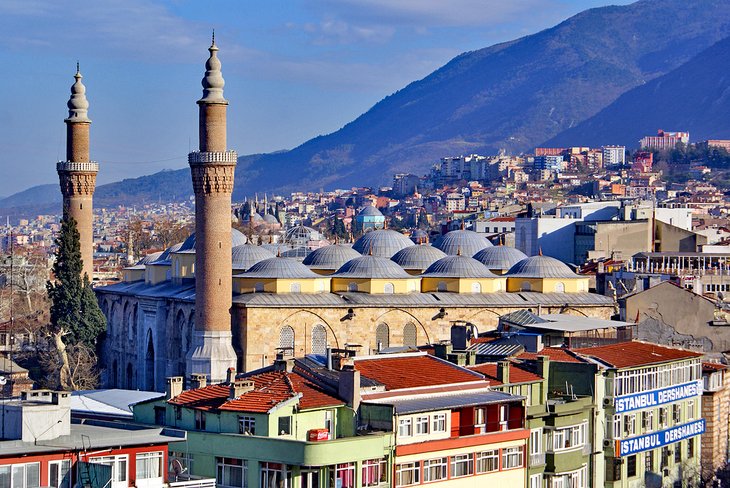
Nestled beneath the slopes of Mount Uludağ, Bursa is a city where the Ottoman Empire first rose to power. Known as the original capital of the empire, Bursa today is a large, lively urban center of two million people, where ancient monuments blend with a thriving modern cityscape.
Visitors come here to trace the roots of Ottoman grandeur, and there’s no shortage of reminders. The city’s centerpiece is the twenty-domed Grand Mosque, a masterpiece of early Ottoman architecture. Not far away, the Yesil Mosque and the adjoining Yesil Tomb dazzle with their intricate green and turquoise tiles. Nearby, the Muradiye Complex houses the beautifully decorated mausoleums of early Ottoman sultans, each one echoing the empire’s early glory.
Wander through the massive Covered Market, and you’ll find yourself lost in a maze of hans (old caravan inns) and bedestens (warehouses), reminders of Bursa’s importance on the Silk Road. Among them, the Koza Han remains the most famous—a tranquil courtyard surrounded by silk shops that have been trading for centuries.
Yet Bursa isn’t just a city of monuments—it’s a city of flavor. This is the birthplace of the Iskender kebab, and locals take that fact seriously. The dish—a rich layering of sliced lamb over butter-soaked pita with tomato sauce and yogurt—is more than a meal; it’s tradition on a plate. Many restaurants claim to serve the best, but the original Kebapçi Iskender is the one every foodie seeks out.
For all its historical weight, Bursa still feels warm and accessible. The locals are proud of their city, the mountain air feels crisp even in summer, and the nearby slopes of Uludağ invite you to hike or ski depending on the season. It’s a city that quietly balances legacy and life, where the past feels alive but never heavy.
4. Sanliurfa
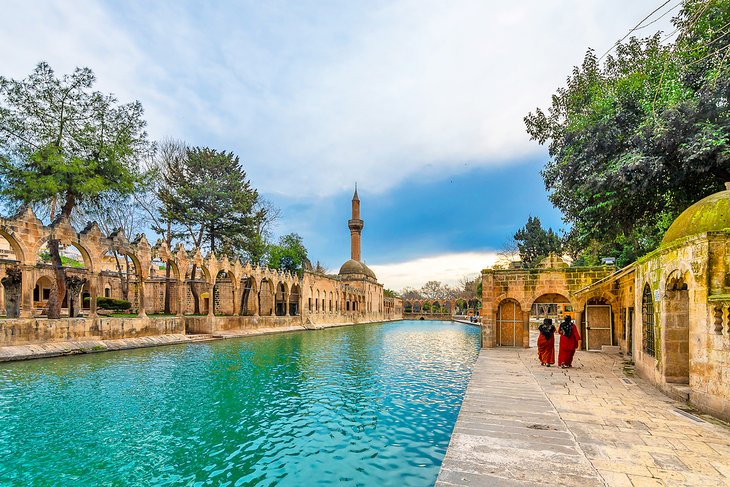
Sanliurfa, often simply called Urfa, is a place where myth and history intertwine so tightly that it’s hard to tell where one ends and the other begins. Believed to be the birthplace of the Prophet Abraham and once known as the ancient city of Edessa, it’s one of the most spiritually and archaeologically significant cities in all of Turkey’s southeast.
In recent years, Urfa has drawn global attention thanks to the opening of Göbeklitepe—the world’s oldest known temple complex, dating back over eleven thousand years. Perched just beyond the city limits, its vast circular enclosures and mysterious carved pillars have rewritten humanity’s understanding of early civilization. Recognized as a UNESCO World Heritage Site in 2019, Göbeklitepe alone is reason enough to journey here.
Back in the city, the newly built Archaeological Museum stands as one of Turkey’s most impressive. With its modern design and expertly curated displays, it houses artifacts that trace the region’s importance from prehistoric to classical times. Together, the museum and Göbeklitepe create a bridge between the dawn of civilization and the living culture of Urfa today.
But history isn’t confined to museums. The old town bazaar bursts with life—narrow alleys packed with copper workshops, fragrant spice stalls, and fabric merchants who greet you with genuine warmth. The sound of hammering metal mixes with the aroma of strong coffee as locals gather in the courtyards of ancient caravanserais now turned into shaded cafés.
Just beyond lies Gölbasi Park, a serene, leafy sanctuary and a pilgrimage site tied to the legend of Abraham. Here, pools shimmer with sacred carp that locals believe should never be caught or eaten, and historic mosques rise gracefully over the water. To wander through Sanliurfa is to feel like you’ve stepped into a living story—part scripture, part history, and entirely unforgettable.
5. Izmir
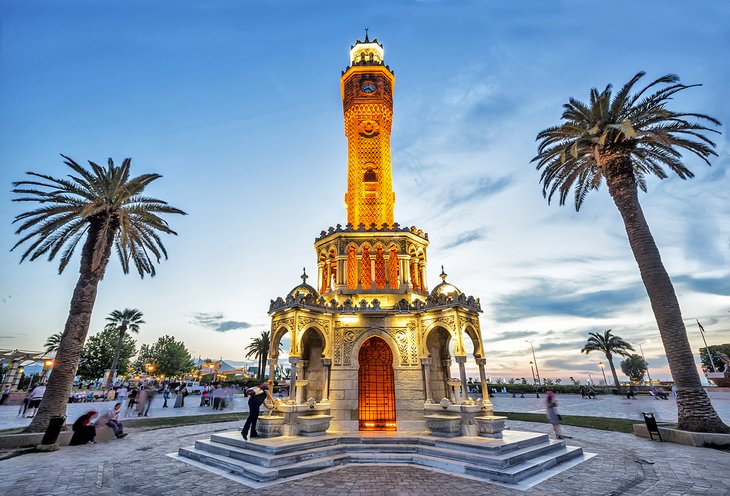
Set along the glittering Aegean coast, Izmir is a city that manages to feel both deeply historical and effortlessly modern. As Turkey’s third-largest urban center with nearly three million residents, it blends cosmopolitan sophistication with the easy charm of a seaside town. For many travelers, Izmir is the perfect base for exploring the legendary ancient cities of Ephesus and Pergamum, both within day-trip distance.
But Izmir is not merely a stopover—it’s a destination in its own right. Once known as Smyrna, this was one of the most important ports in the ancient world. For centuries, Greeks, Armenians, Jews, and Turks lived side by side here, making it one of the Mediterranean’s most vibrant cosmopolitan centers. You can still feel that multicultural energy in the air, even though much of the old city was lost in the great fire of 1922 that reshaped its history forever.
The city that rose from the ashes is one of youthful energy and commerce, yet remnants of its layered past remain. The heart of Izmir beats in the Kemeralti Market district, a maze of narrow alleys and historic caravanserais. Here, Ottoman warehouses have become artisan workshops, old inns transformed into teahouses, and streets lined with stalls selling everything from copper pots to fragrant spices. Wander long enough, and you’ll stumble upon tiny mosques tucked between archways, or perhaps a café where the same family has been serving Turkish coffee for generations.
Today, Izmir feels confident in its modern identity—a city of seaside promenades, art galleries, and rooftop bars where locals gather to watch the sunset over the bay. It’s a place where you can spend your mornings visiting ruins, your afternoons shopping in the bazaar, and your evenings savoring meze and seafood while listening to live music. Izmir is both a mirror of Turkey’s rich history and a glimpse into its bright, forward-looking spirit.
6. Konya
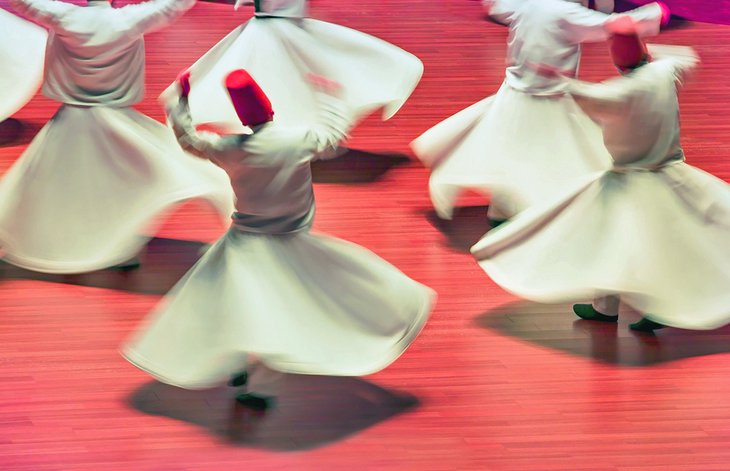
Konya is a city steeped in mysticism and devotion, a place where the poetry of the soul meets the architecture of faith. Once the capital of the Seljuk Empire, it’s best known as the home of Mevlana Celaleddin Rumi—the 13th-century Sufi poet and philosopher whose words continue to inspire people across the world. His presence lingers in every corner of the city, especially in the Mevlana Museum, which holds his tomb and the artifacts of his spiritual order.
The museum’s turquoise dome glows beneath the Anatolian sun, and stepping inside feels like entering a space between worlds—part sanctuary, part museum, part place of reflection. Every year, thousands of visitors come to Konya to pay their respects and to experience the mesmerizing ceremonies of the Whirling Dervishes. Watching them spin in silent rhythm feels less like a performance and more like a glimpse into divine meditation.
Beyond its spiritual fame, Konya is a treasure chest of Seljuk architecture. The Karatay Medresesi, once a theological school, now serves as a museum that displays exquisite examples of tilework and calligraphy from the Seljuk era. The Alaeddin Mosque, perched on a small hill, offers not just history but also a sense of calm above the modern city that sprawls below.
Outside the city lies the archaeological site of Çatalhöyük, one of the oldest known human settlements in the world. Walking through its excavated homes and murals, you can almost sense the continuity of human life in this land stretching back nine millennia.
Konya, with its calm streets, pious atmosphere, and deep historical layers, isn’t a place that overwhelms—it quietly invites you to slow down, reflect, and see Turkey from a more contemplative perspective.
7. Fethiye
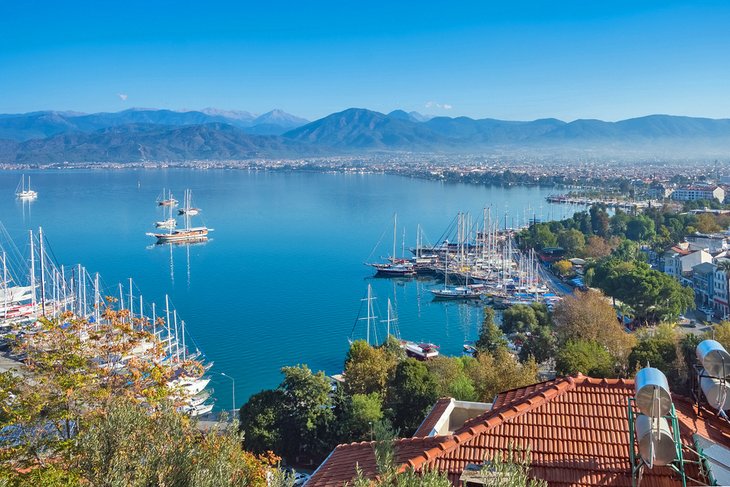
Fethiye is the kind of place that feels like a painting come to life—a small coastal city cradled between turquoise waters and green hills. With a population of around a hundred thousand, it might seem modest in size, but its natural beauty and charm make it one of Turkey’s most beloved travel destinations.
The harbor is the heart of the city, where fishing boats and luxury yachts rest side by side. Fethiye is famous as a hub for sailing enthusiasts, and many embark from here on Turkey’s iconic “Blue Cruise”—a multi-day voyage through some of the Mediterranean’s most stunning coves, islands, and ancient ruins. Even if you’re not sailing away, simply watching the boats drift across the bay at sunset feels unforgettable.
Beyond its harbor life, Fethiye is a gateway to some of Turkey’s most beautiful natural and historical sites. Just outside the city, forested hills hide the ancient Lycian ruins of Xanthos and Letoon, both UNESCO World Heritage Sites that echo with the voices of lost civilizations. Hike among crumbling stone tombs, then descend back to the shore where clear waters lap at the feet of mountains.
For those chasing sun and sea, Fethiye is perfectly positioned. It’s the closest city to the world-famous beach of Ölüdeniz, known for its luminous blue lagoon and paragliding adventures that offer breathtaking aerial views. Nearby, Butterfly Valley lies hidden between cliffs—a slice of paradise accessible only by boat or steep trail.
What sets Fethiye apart isn’t just its scenery but its laid-back rhythm. Evenings are spent along the waterfront promenade, where open-air restaurants serve grilled fish, and the sound of waves mingles with laughter and music. It’s a place that seems to pause time—a gentle reminder of why the Mediterranean has long been a haven for dreamers.
8. Gaziantep
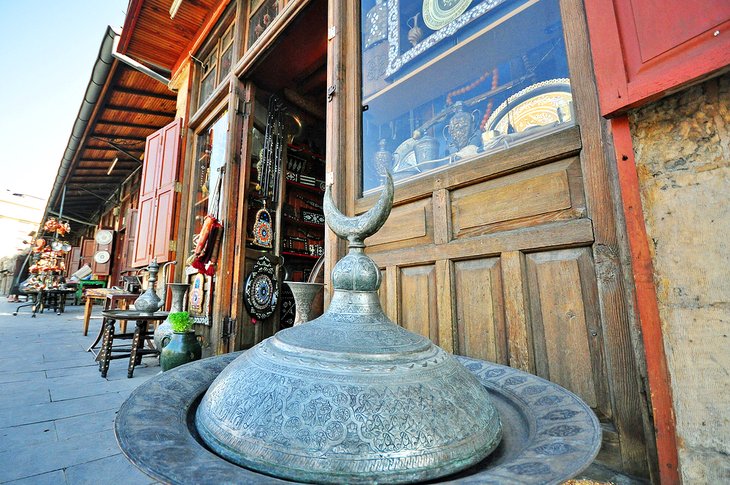
Few cities in Turkey can tempt your taste buds like Gaziantep. Known nationwide as the country’s culinary capital, this southeastern gem is synonymous with baklava—the rich, layered pastry drenched in syrup and pistachios that Gaziantep perfected. But while dessert may be its claim to fame, the city’s appeal goes far beyond its kitchens.
Gaziantep is a vibrant, industrious city that manages to balance tradition with modern growth. Its crowning cultural treasure is the Gaziantep Zeugma Mosaic Museum, one of the world’s finest collections of Roman mosaics. Many of these intricate artworks were salvaged from the ancient city of Zeugma before it was submerged by the Birecik Dam. The mosaics—depicting gods, myths, and daily life—offer a stunning window into the past, preserved with extraordinary detail.
Once you’ve explored the museum, the best way to experience Gaziantep is to lose yourself in its old town. Narrow alleys lead to bustling bazaars filled with copper workshops, spice vendors, and textile stores. The aroma of roasting pistachios and simmering syrup seems to follow you everywhere, mingling with the scent of Turkish coffee drifting from old stone cafés.
Every corner has its rhythm: a craftsman hammering metal, a merchant bargaining with a customer, a family sitting outside sharing sweets. And of course, no visit is complete without sampling the local baklava from one of the city’s legendary pastry shops—each one claiming to be the true original.
Gaziantep doesn’t just satisfy the stomach; it feeds the spirit of curiosity and culture. Its hospitality, artistry, and authenticity make it one of the most rewarding stops on any Turkish journey.
9. Ankara
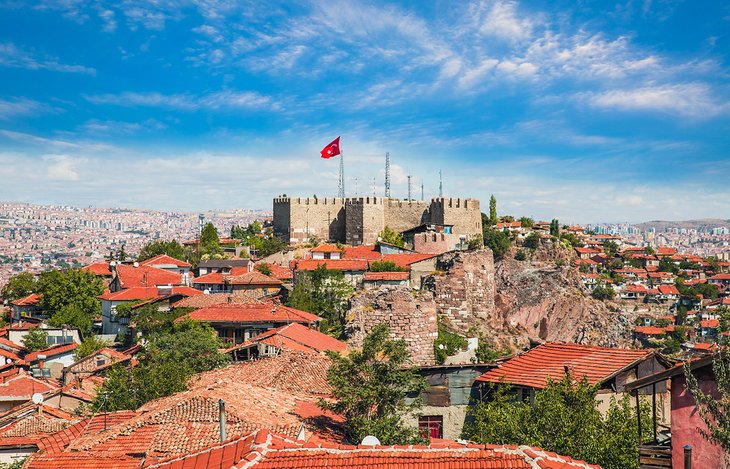
Ankara, Turkey’s capital and its second-largest city, often surprises first-time visitors. While it may not have Istanbul’s chaos or coastal charm, Ankara holds its own with an understated strength—it’s a city of intellect, governance, and deep history. Located in the heart of Anatolia, it’s where ancient civilizations and modern Turkey converge.
This sprawling metropolis of nearly five million people serves as the nation’s political and administrative center, but beyond the government buildings and business districts lies a city rich with culture. The Museum of Anatolian Civilizations stands as one of the most extraordinary museums in the country, housing relics from every era of human settlement across the region—from the Neolithic age to the Iron Age. Artifacts from Hittite, Phrygian, and Urartian civilizations fill its halls, allowing you to trace the roots of Anatolia’s vast story in a single visit.
Equally monumental is Anıtkabir, the grand mausoleum of Mustafa Kemal Atatürk, the founder of modern Turkey. Perched on a hill overlooking the city, it’s both a place of national reverence and quiet reflection. The surrounding complex includes museums chronicling Atatürk’s life and the country’s transformation during the early 20th century. Walking the ceremonial pathway toward his tomb, lined with solemn stone lions and immense columns, evokes a sense of gratitude and awe for the man who shaped the nation’s identity.
For travelers interested in archaeology, Ankara is also the perfect base for visiting two of central Anatolia’s most important ruins: Hattusa, the once-mighty Hittite capital, and Gordion, home to the legendary Gordion Knot famously cut by Alexander the Great. These sites provide a remarkable look at the civilizations that once ruled this heartland long before the concept of modern Turkey existed.
Though Ankara might appear practical on the surface, it reveals its warmth in its people, tea gardens, and lively student cafés. It’s a city that rewards those who take the time to look beneath its official face, discovering a soul that quietly ties the country together.
10. Eskisehir
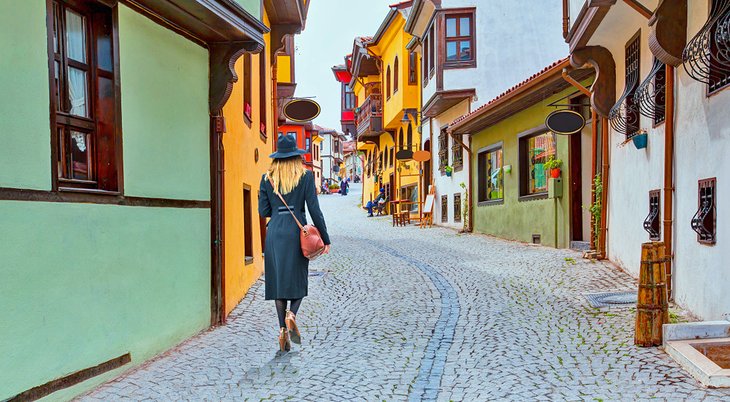
Eskisehir is one of Turkey’s most youthful and creative cities—a place where modern design meets traditional spirit. Known as a university hub, it’s filled with energy, laughter, and a sense of freedom that’s hard to miss. Locals stroll along riverside promenades, sip coffee in art-filled cafés, and fill the parks on weekends with picnics and music.
The heart of the city’s old soul lies in the charming district of Odunpazarı. This area, lined with colorfully restored Ottoman-era houses, feels like stepping into another time. Wooden balconies lean over cobbled streets, and tiny boutiques sell handmade crafts, ceramics, and local delicacies. It’s here that you’ll also find Eskisehir’s most remarkable modern attraction—the Odunpazarı Modern Museum, known as OMM.
OMM stands as a symbol of the city’s creative evolution, showcasing contemporary Turkish and international art through sculpture, installation, and painting. The museum’s architecture alone, with its sleek wooden façade inspired by traditional houses, draws visitors from all over the country. Together with the nearby art galleries and open-air installations, it has made Eskisehir an emerging center for culture outside Istanbul.
But Eskisehir isn’t just about art. Families and travelers alike enjoy taking gondola rides on the Porsuk River that meanders through the city, adding a touch of romance to the urban scenery. The parks are vast, green, and full of life—ideal places to slow down, eat simit (a sesame-covered bread ring), and watch the world go by.
Thanks to new high-speed train connections linking it with Istanbul, Ankara, and Konya, Eskisehir has become a favorite stop for travelers exploring central Turkey. What once was an overlooked provincial city has transformed into a lively, modern destination that feels both traditional and ahead of its time—a reflection of Turkey’s evolving identity.
11. Antakya
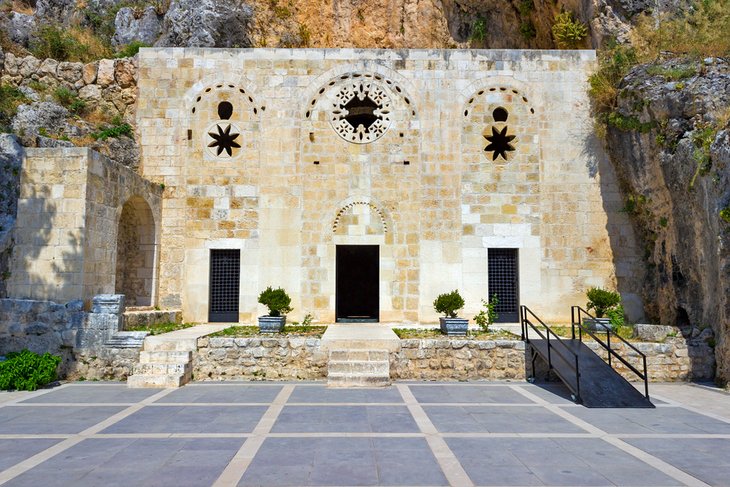
Known in ancient times as Antioch, Antakya is one of the oldest continuously inhabited cities in the world and holds a special place in the history of Christianity. It’s believed that both St. Paul and St. Peter preached here to some of the first Christian communities, and the echoes of that spiritual heritage still linger in the air.
The city’s old town is a maze of narrow stone alleys shaded by wooden eaves and filled with the scent of herbs and soap. Ottoman-era houses with internal courtyards and vine-draped balconies line the cobblestone streets, where locals chat over coffee or browse market stalls piled with spices, olives, and fresh produce. The atmosphere feels intimate and lived-in—like a place where time moves at its own pace.
Among Antakya’s most extraordinary treasures is the Hatay Archaeology Museum, home to one of the world’s largest and finest collections of Roman and Byzantine mosaics. The museum not only preserves these masterpieces but also displays Bronze Age artifacts that reveal the deep layers of civilization that have flourished here for thousands of years.
A short distance away lies the Church of St. Peter, carved directly into a mountainside and considered one of the oldest surviving churches in existence. Nearby stands the Museum Hotel, which was built over an enormous intact mosaic floor discovered during construction—now carefully preserved and visible beneath glass walkways. The way Antakya blends its ancient past with modern life makes it both a historical marvel and a living, breathing city.
Antakya’s culinary reputation is also legendary. Its cuisine—rich with influences from Arabic and Mediterranean traditions—is a reason to visit on its own. From hummus and kibbeh to local pastries drenched in syrup, every bite feels like a journey through history.
12. Trabzon
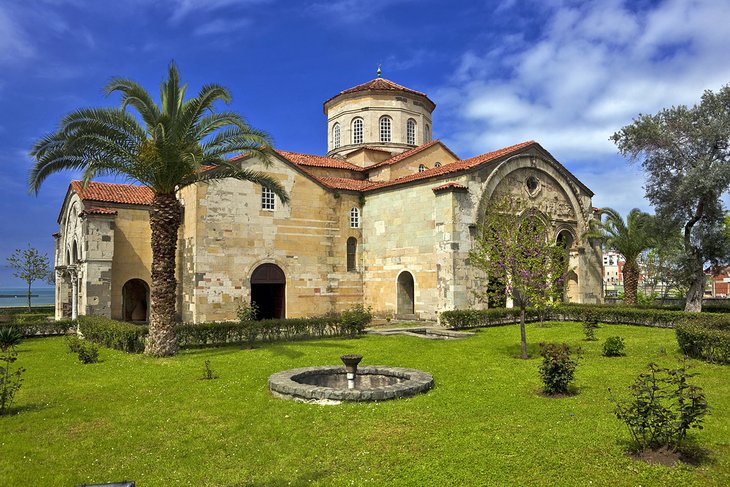
On the lush Black Sea coast, Trabzon is a city of misty mountains, deep green valleys, and ancient monasteries clinging to cliffs. Though many travelers stop here briefly on their way to other destinations, Trabzon deserves time and attention—it’s a place where culture, nature, and history merge beautifully.
For centuries, this was a key trading port linking Anatolia with the Caucasus and beyond. Its most famous monument, the Sumela Monastery, remains a symbol of faith and endurance. Perched dramatically on a steep rock face in the Altındere Valley, this Greek Orthodox monastery seems to defy gravity itself. Though parts of it have been closed for restoration in recent years, just witnessing its location among the clouds is an unforgettable experience.
Within the city, Trabzon’s own Aya Sofya—a smaller namesake of Istanbul’s iconic Hagia Sophia—offers a glimpse into Byzantine art and architecture. Its frescoes, painted in the 13th century, remain remarkably vivid, depicting scenes of faith and empire. Nearby, the Ortahisar neighborhood, also known as the middle castle, is a walled quarter filled with Ottoman houses and charming courtyards where tea gardens thrive under old stone arches.
Trabzon’s bustling bazaar district carries the heartbeat of everyday life. Merchants sell everything from fresh hazelnuts to handwoven textiles, while the smell of strong coffee drifts from cozy cafés tucked beneath historic caravanserais. But what truly distinguishes this region is its cuisine—earthy and rich, full of the flavors that reflect its multicultural roots. Dishes like kuymak (a warm, cheesy cornmeal dish) and anchovy specialties speak to the Black Sea’s abundance and the local pride in its traditions.
Beyond the city, the hills unfold into tea plantations, forests, and small villages where life continues much as it has for generations. Mist rolls in from the sea, and for a moment, the world feels hushed, timeless. Trabzon may sit on the edge of Turkey, but its heart beats deep in the country’s soul—a fitting place to end a journey through this land of endless discovery.
Turkey’s cities each carry their own rhythm—some ancient and wise, others modern and restless—but together they create a symphony of culture, faith, flavor, and friendship. Whether it’s the bustling grandeur of Istanbul, the serene shores of Fethiye, or the mystical quiet of Konya, every traveler who wanders through Turkey leaves carrying a piece of its spirit.


